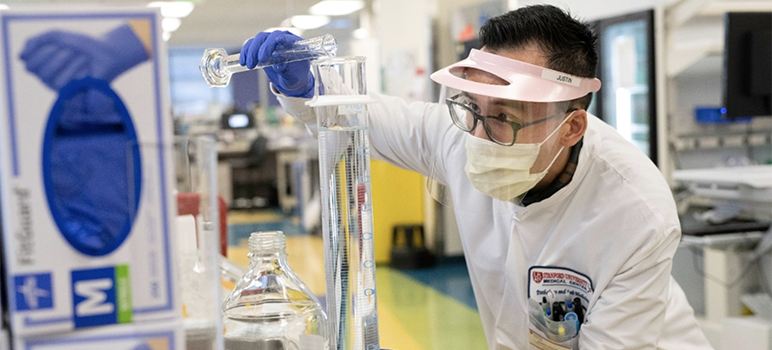Though they play a vital role in pulling this nation through the coronavirus pandemic, the U.S. hospital system has taken a massive financial hit from the crisis.
Stanford Health Care is no exception, suffering a nosedive in revenue from having to cancel all non-critical procedures to prevent its front line workers from being overwhelmed by an influx of COVID-19 patients.
The hospital system resumed previously delayed procedures on Monday after the system tested more than 11,000 of its 14,000 employees.
“Stanford Medicine prepared for the worst, and now we’re ready to resume much of what was put on pause during this health crisis,” David Entwistle, president and CEO of Stanford Health Care, said in an announcement this week. “We have planned for this recovery and restoration, and I’m confident that we can hit the ground running.”
But the fiscal fallout of bracing for crisis has prompted Entwistle to enact drastic pay cuts across its entire healthcare network, affecting some 14,000 employees.
Stanford has given its workers two options.
It will require its employees to take 12 furlough days over a period of 10 weeks, amounting to a pay cut of 20 percent during that period of time. Or, employees can accept decreased pay through paid time off.
Workers who are furloughed would be able to apply for unemployment.
Many of the employees, such as janitorial staff, nursing assistants, and lab technicians who make below $65,000 per year, say they would be disproportionately affected by the cuts. Front line workers this past week sent an open letter to Stanford, outlining a plan that would reduce the impact of the steep pay cuts on workers with the lowest salaries.
First, the letter suggests a tiered approach to furloughs or unpaid time off, exempting the lowest-paid employees. The letter also asks that Stanford ensure that none of its employees lose their medical benefits as a result of these pay cuts and furloughs.
Employees are also asking for more transparency from Stanford regarding the furloughs, including asking for information on how much Stanford’s revenue is impacted. Due to COVID-19, the Stanford network halted elective surgeries and emergency room visits decreased by 40 percent since the shelter-in-place order was declared.
Employees further demanded to know how much Stanford Health Care will gain from $175 billion in federal stimulus funds from the CARES Act.
A pay cut for Entwistle, who makes $3 million per year, would benefit Stanford employees who make 2 percent of his salary annually. A 20 percent pay cut for Entwistle over the next 10 weeks would free up $600,000, leaving Entwistle with $2.4 million.
Similarly, employees stated, if Chief Operating Officer Quinn McKenna (who made $2 million in 2018) took a temporary $350,000 pay cut, he could stop the 12 days of furloughs for all 131 lab assistants.
SEIU-United Healthcare Workers West, which represents some 2,500 front line workers at the university hospital, said the decision by administrators took members by surprise.
Lisa Kim, a spokeswoman for Stanford Health Care, told reporters that what the hospital is going through is hardly unique as the nation enters the second month of the pandemic.
“This is a difficult but necessary decision to sustain the long-term health of the organization,” she said in a prepared statement, “so we can continue to provide critical services to the community.”





Thank you for this article. It is more important than ever to start watchdogging these issues in every aspect of our community. So much for the ” shared sacrifice ” – time to start looking at the pay of top level executives and local government leaders.
> time to start looking at the pay of top level executives and local government leaders.
… and ALL federal, state, and local government employees — including public school teachers — who are STILL getting their paychecks and still getting their healthcare benefits and still getting contributions to their retirement plans.
I did an informal survey among neighbors and asked if they agreed that the lock downs should NOT end until there were no more COVID-19 deaths. A neighbor thought that was a very reasonable proposition.
His reality was that he was still receiving his government retirement check and health benefits, and the Safeway was still open.
Coronavirus crisis? What coronavirus crisis?
Yep, this latest crisis has been the best one yet for Big Koolaid. More power, more excuses to expand their domain, lots of people to rescue. And it’s a hard job rescuing all those people. And it’s heroic work so better pay is in order for all our government workers to whom we will all be beholden for many years to come. After all if you’re still alive in two years it’ll only be because of them.
Our dear leaders might have a different perspective had their pay checks been stopped, their credit cars shut down, and banks close to them.
Nancy got a new face lift, a new freezer to put $20.00 a pint chocolate Ice cream in, and we get told to hold our breath till Trump can develop a new Vaccine to stop the Wuhan Red Death from killing anyone else.
Nice Job Nancy!